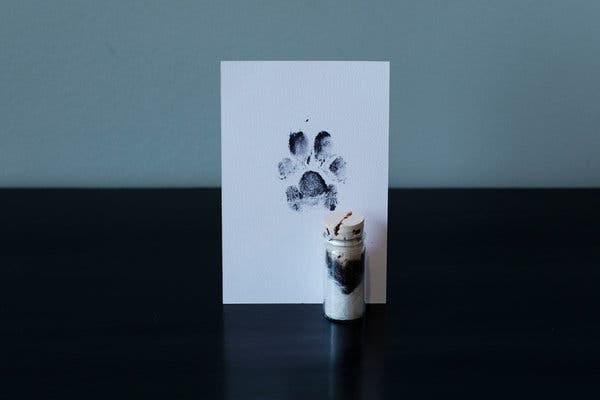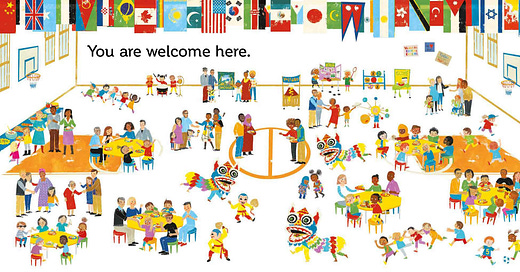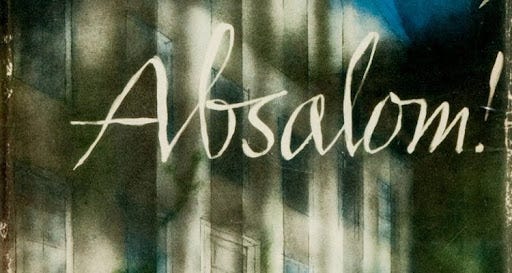Dear Friends,
I walked into work this morning to the news that our administrator’s son’s hamster died over the weekend.
That sentence feels like a bit much. There’s a lot of layers there. And also, it feels like a sentence you all have some familiarity with – that child meets dead pet intersection.
Undoubtedly my first dead pet was a fish. I had a lot of fish in my early years of life, though I’d probably been somewhat cognizant of a dead great-grandparent before any fish died. My middle sister – she had to confront dead grandfather and dead dog before dead fish, I think. Not the ideal order of operations, I’d say. We didn’t talk about the rainbow bridge back then. They were just dead.

Of course, God is with us in the dead pets. And in the dead grandparents and parents and children and siblings and friends. But that doesn’t mean that, like King David crying out for his lost son Absalom in this week’s Hebrew Bible reading, there isn’t wailing and gnashing of teeth. There is. There should be.
We weep, at least in part, because we belong to each other.
Putting away falsehood, let all of us speak the truth to our neighbors, for we are members of one another. - Ephesians 4:25
Circles Of Belonging
We are standing on the cusp of a season of belonging, or at least the search for it.
Back to school is complicated like that. And I am always heartened to hear about the ways teachers and other professionals find ways to support that sense of belonging. Because gosh, little kids are so good at that. They make room for the new friends in the circle. But the big kids, the ones I continue to still try to get a handle on, they’re as afraid of their own awkwardness, their own lack of belonging, that they’ll often accept being alone instead of trying to connect. There’s less risk.
Little kids embrace the circle time sharing, the inviting picture books like All Are Welcome by Alexandra Penfold, the quick commonalities.
With older kids, I’ve latched on to strategies for engineering commonality, like the Who’s In My Circle? activity. Or ones that take technology offline, turning Instagram, Twitter, and other platforms into on-paper entertainment, like this faux-Twitter community builder (there’s no point in tweeting if you don’t have followers – both familiar and new). These things work for our church classrooms as well as they do for the average classroom – especially if, I don’t know, Paul is tweeting his epistles instead of sending them by mail care of sailing travelers.
Of course, much as this week’s title suggests, Jesus is where bread, death, and belonging all come together, but that’s probably not where you want to begin the conversation most of the time. Or maybe it’s the perfect place to begin the conversation – with the sharing of communion within the small circle of a newly formed group. It’s one of my most striking memories, the times that my youth group would share communion, just us, our pastor, our handful of leaders, offering the bread and the wine to each other in turn.
As someone who doesn’t make a lot of eye contact, the way in which we see each other in the sharing of communion is different from the way we see each other at other times. But it’s a lot like how the door person of a Godly Play classroom sees the children as they come and go.
Absalom, Absalom! A father whose son was no longer cries his name.
The priest names the recipient – the body of Christ, the bread of heaven.
The door person greets the child by name as they arrive, with real joy in seeing them.
All the ways we belong.
Some of you are in communities that have gone back to school and some still have a month. Some of you have blessed the backpacks and some haven’t even begun thinking about that. But we’re lucky that wherever we are on any given phase of a journey we already belong. We’re all just extra lucky that we get to do the work of welcoming others into belonging, too.
Resource Round-Up
Understanding Adverse Childhood Experiences (ACEs) is essential, but research exploring Benevolent Childhood Experiences (BCEs) is also deeply valuable – and belonging and faith can be tied up in them. Perhaps most importantly, while there’s very little we can do to control for or prevent many ACEs, we can all be part of creating BCEs by being community-creators, by being good neighbors, caring teachers or adult advisors. We can work to counter the forces of adversity and that’s empowering!
In a similar vein, with the general doomsaying about organized religion, it’s easy to focus only on the way religion has traumatized people, and it’s true that we can’t ignore that. But there’s also evidence that religion can make us happier. For the podcast Good On Paper, Jerusalem Demsas interviews Arthur Brooks on the role of faith in our overall happiness.
I’m pretty anti-AI, but someone went and built an AI church lady who will answer your questions about the Episcopal Church (and, for my non-TEC readers, maybe there’s one for your denomination too). Anyway, philosophical concerns aside, I imagine querying Cathy could be a very entertaining and educational way of exploring doctrine and liturgy with youth or even adults.
In this intensely busy season, I’m really appreciating the way that Meredith Miller lines out how to Name and Narrow the demands of the time to sustain a family culture of faith without things becoming overwhelming. And if you’re not sure what your family’s faith practice looks like, now or in general, that’s okay. The beauty of this is starting small.
I’m absolutely charmed by the He Will Rejoice album by Grace Pres Band – especially “Fear Not!” – it’s so cheery and also singable, and we all know I love memory verse fodder.
Thats’s all for this week! I don’t know about you all, but July was a bit of a blur and I finally feel like I have my feet back under me. Prayers that you all can find that same stable ground.
Peace,
Bird





